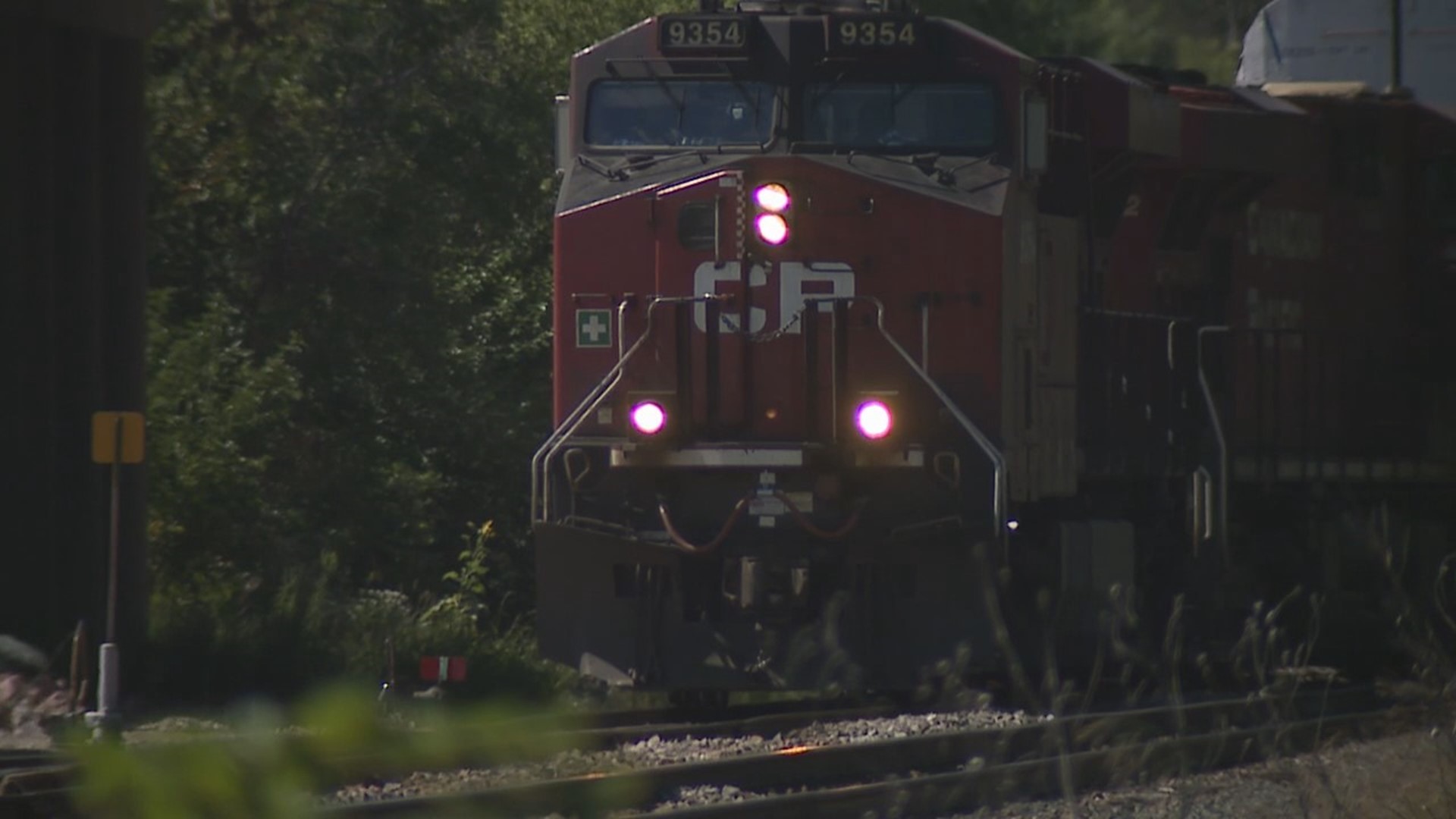DAVENPORT, Iowa — The federal Surface Transportation Board is expected to issue its decision on the approval or denial of the Canadian Pacific and Kansas City Southern Railway merger sometime this quarter. That decision could come as soon as next Monday, Feb. 27.
Monday marks the end of a 30-day waiting period after the board's Office of Environmental Analysis released its final report on the impact of the proposed merger. If approved, it would be the first major railroad merger since the 1990s.
The final Environmental Impact Statement studied what changes the merger would bring to the rail system, spanning 8,600 miles of track in the U.S. and connecting Mexico to Canada.
Overall, the report found that most of the potential adverse impacts of the merger would be "negligible, minor, and/or temporary." That includes impacts on grade crossing delays and emergency vehicles. However, it did find that train noise associated with increased rail traffic "would result in adverse impacts on many residences and other locations that are sensitive to noise."
The greatest train traffic increase is expected to stretch between Sabula, Iowa and Kansas City, Missouri, with that section of the railway seeing approximately 14.4 more trains per day.
Scott County is expected to be the most impacted by noise, out of all the counties along the railroad from Webb County, Texas to Cook County, Illinois. With the merger, Scott County would have 1,016 noise-sensitive locations, compared to 593 without the merger. Noise-sensitive locations include homes, hospitals and schools.
The report also found that the merger would delay vehicles at 276 evaluated crossings by an average of 0.7 seconds. That increases the current average delay per vehicle from 4.0 seconds to 4.7 seconds.
In a drafted version, the report said Ripley Street in Davenport would have the greatest average increase in delay for any grade crossing at 7.3 seconds. However, in the final report, that finding has been crossed out.
Perry Street in Davenport was identified along with three other crossings that would decrease in level of service, or the flow of traffic, from LOS A to LOS B. The crossing would have an average delay increase of 5.4 seconds, the highest of the four. Ripley Street was also originally in that category, with the highest increase.
Additionally, the report says there are 73 crossings across the rail that don't have an alternate route for emergency services because they lead to dead-end streets. In Iowa, that includes crossings in Bettendorf, Buffalo, Camanche, Clinton, Davenport, Fredonia, LeClaire, Muscatine, Pleasant Valley, Princeton, Riverdale, Sabula and Seymour.
In terms of rail safety, the greatest increase in the number of incidents, such as derailment or other accidents would occur between Muscatine and Ottumwa. With no merger, that section sees 0.11 incidents per year, but would increase to 0.43. That amounts from one every 9.4 years to one every 2.3 years.
"As indicated in Section 3.1.1.2, Affected Environment, 99.9 percent of incidents during the five-year review period did not result in injuries or fatalities," the report states. "OEA expects that under the Proposed Acquisition, most incidents would continue to be minor and only a small percentage would result in impacts to human health.:
The OEA says there will be increased transportation of hazardous materials on 141 of the 178 rail segments, or approximately 5,802 miles of rail lines, in 16 states, including Iowa, Illinois and Ohio, where 38 Norfolk Southern freight train cars recently derailed, spilling toxic chemicals. However, the report found the number of hazardous material releases would remain low. Across all of the rail line segments where transportation would increase, it's projected that 12.88 releases would occur per year with the merger, compared to 10.36 without. In the railyards, there would be 24.99 releases per year, compared to 23.50 without the merger.
The report recommends the Surface Transportation Board require the new rail company to abide by the agreed settlements Canadian Pacific made with several cities that would face the highest increase in train traffic.
Davenport settled for $10 million, Bettendorf and Muscatine both settled for $3 million and LeClaire settled for $750,000.
Last Friday, U.S. Senators Dick Durbin (D-IL) and Tammy Duckworth (D-IL), along with Representatives Raja Krishnamoorthi (D-IL-08) and Delia Ramirez (D-IL-03) asked the Surface Transportation Board to defer its decision on the merger under it completes a "more accurate assessment of the impacts of the merger on the Chicago region."
In a letter to the STB chairman, the lawmakers wrote:
“The Environmental Impact Statement (EIS) recently released by the STB significantly underestimates the impacts of the merger. It relied only on data provided by CP and ignored more comprehensive modeling provided by Metra, the Chicago region’s commuter railroad whose tracks CP operates on. We urge the STB to conduct a supplemental analysis of the impacts of the merger on the Chicago region using modeling provided by Metra or by conducting its own independent modeling. This would more accurately assess the impacts on Illinois communities, determine appropriate mitigation measures, and meet the STB’s obligations under the National Environmental Policy Act (NEPA).”
Watch more news, weather and sports on News 8's YouTube channel

